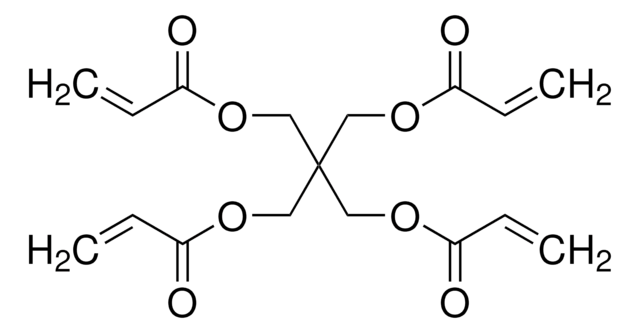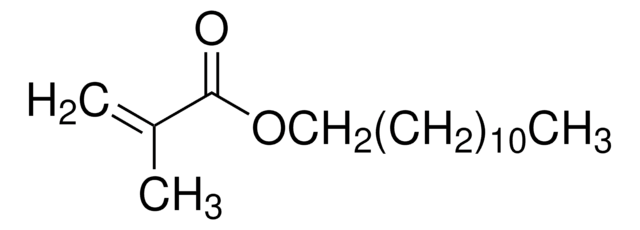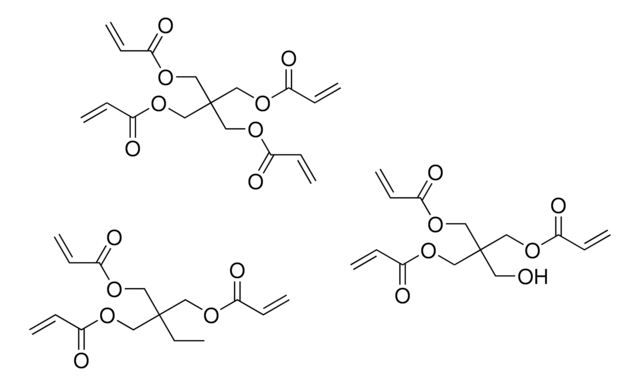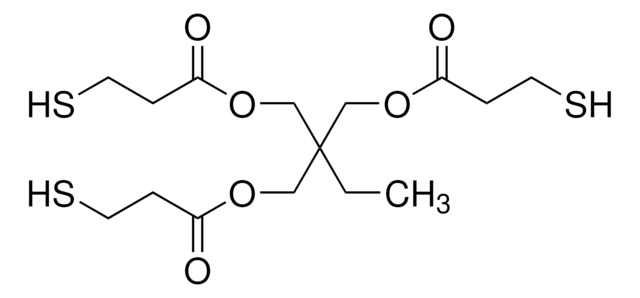246840
Trimethylolpropane trimethacrylate
contains 250 ppm monomethyl ether hydroquinone as inhibitor, technical grade
Synonym(s):
Acryester TMP, Blemmer PTT, PTMA, TMPTMA
About This Item
Recommended Products
grade
technical grade
Quality Level
vapor density
>1 (vs air)
vapor pressure
<0.01 mmHg ( 20 °C)
contains
250 ppm monomethyl ether hydroquinone as inhibitor
refractive index
n20/D 1.472 (lit.)
density
1.06 g/mL at 25 °C (lit.)
SMILES string
CCC(COC(=O)C(C)=C)(COC(=O)C(C)=C)COC(=O)C(C)=C
InChI
1S/C18H26O6/c1-8-18(9-22-15(19)12(2)3,10-23-16(20)13(4)5)11-24-17(21)14(6)7/h2,4,6,8-11H2,1,3,5,7H3
InChI key
OKKRPWIIYQTPQF-UHFFFAOYSA-N
Looking for similar products? Visit Product Comparison Guide
Related Categories
General description
Application
- Poly(hydroxyethyl methacrylate) (pHEMA) nanocomposites that are used in the dental industry.
- Silicone rubber with a reduced bleed-out ratio.
- Organic monolithic column by living/controlled free-radical polymerization. This column can be used as a stationary phase in capillary liquid chromatography.
- Macroporous poly (glycidyl methacrylate-co-trimethylolpropane trimethacrylate) materials with fine controlled porous properties.
Storage Class Code
10 - Combustible liquids
WGK
WGK 2
Choose from one of the most recent versions:
Already Own This Product?
Find documentation for the products that you have recently purchased in the Document Library.
Customers Also Viewed
Our team of scientists has experience in all areas of research including Life Science, Material Science, Chemical Synthesis, Chromatography, Analytical and many others.
Contact Technical Service














